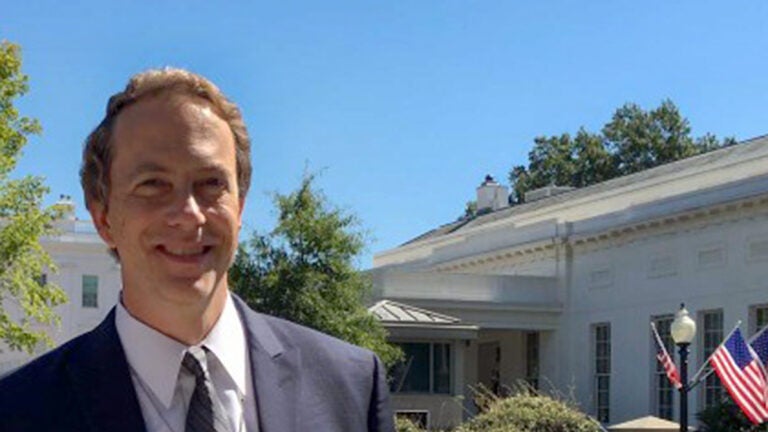
U.S. Commerce Secretary Penny Pritzker and L.A. Mayor Eric Garcetti (Photo/Chris Flynn)
Commerce secretary announces new supply chain partnership with USC Marshall and local ports
The alliance aims to move cargo through the nation’s ports more efficiently by adopting new technology
An alliance aimed at improving the nation’s supply chain was announced by U.S. Commerce Secretary Penny Pritzker in partnership with the USC Marshall School of Business and the ports of Los Angeles and Long Beach.
Pritzker praised the meeting as an important first step in the larger conversation of how to bring U.S. ports up to global best standards as part of the department’s 21st Century Ports Initiative.
“Through this new partnership, we hope to encourage ports around the country to increase efficiency by adopting new technologies that will provide more information on the flow of goods to port users and stakeholders,” she said. “The ability to move cargo quickly through our ports is critical to national and regional trade, economic growth and our nation’s overall competitiveness.”
America’s port
The ports of Los Angeles and Long Beach together employ nearly 1 million people in the five-county Southern California region, but it is also the gateway for more than 40 percent of goods entering the country from the Pacific Rim.
“We have one bay, we have two ports and increasingly we have one vision,” said Los Angeles Mayor Eric Garcetti at the Oct. 14 meeting on the University Park Campus. “The ports of Los Angeles and Long Beach must be viewed as the Port of America.”
Both ports are in the throes of multibillion-dollar expansion, as they scramble to keep up with rapid changes in global shipping, including the advent of “super ships” that clog the docks with massive loads.
But key to the challenge of improving efficiencies is modernizing communications between the many shipping companies operating at the ports.
“Global supply chain is a system that operates within multiple silos and within each silo, there are dozens of systems that don’t talk to each other,” said Nick Vyas, executive director of the Center for Global Supply Chain Management and assistant professor of clinical data science and operations. “This has created complex inefficiencies.”
The alliance between the Department of Commerce, USC Marshall and the chain management center will facilitate the crucial first step of dissecting the problem so the ports can move forward with modernizing global supply chain using digital technology, he said.
“The journey of a thousand miles begins with the first step,” Vyas said. “That’s happening today.”
